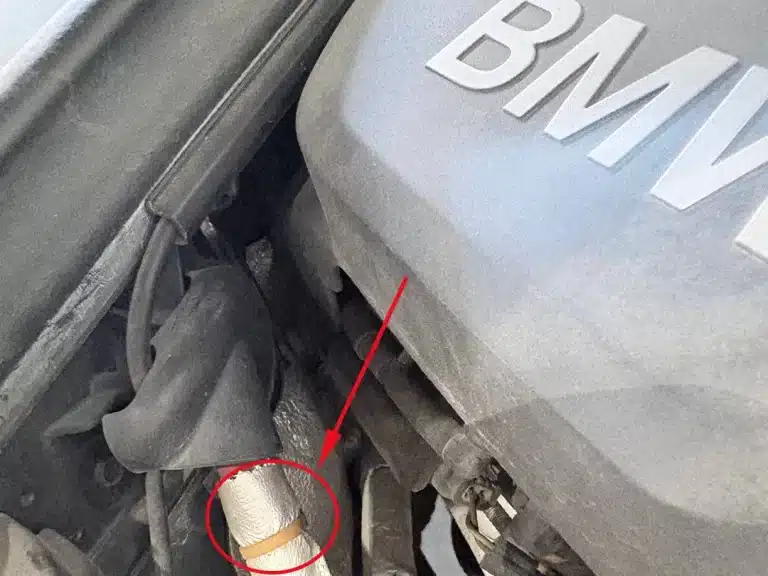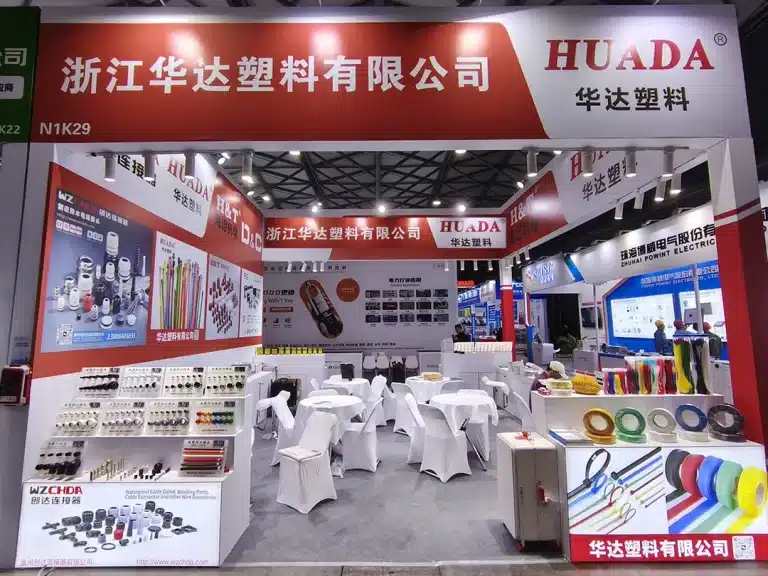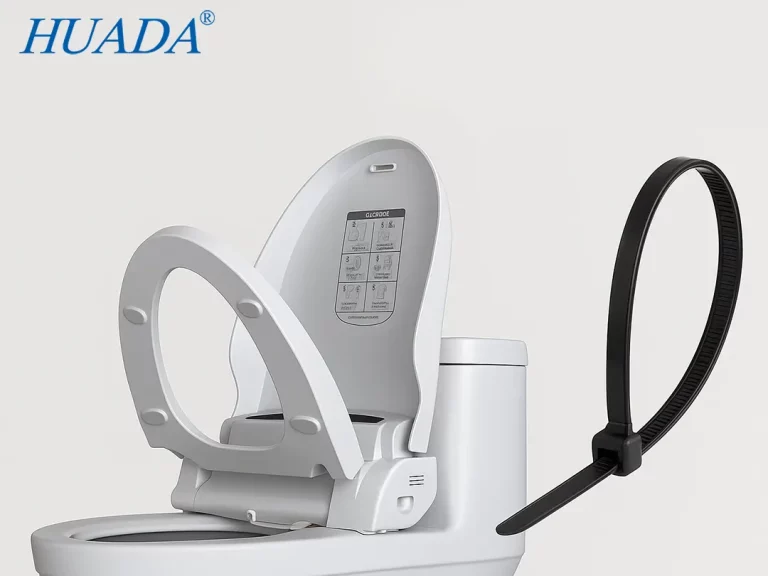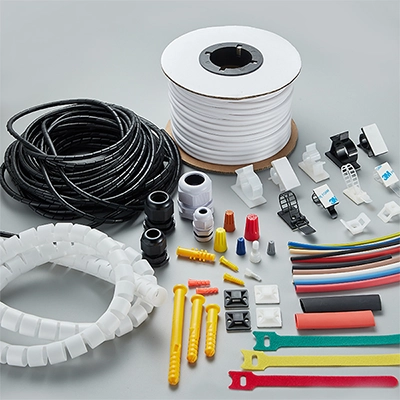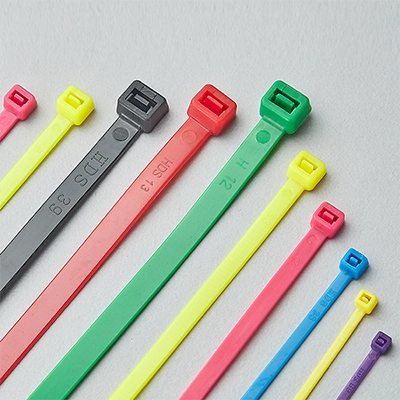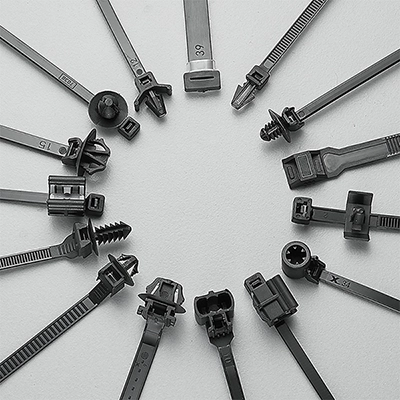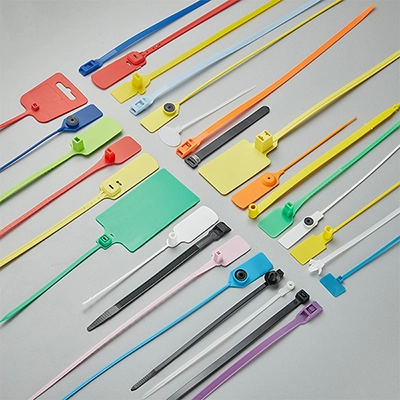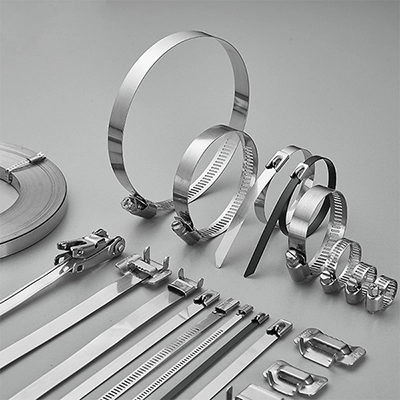A Practical Guide from Inner Bags to Palletized Shipping
When it comes to cable tie packaging, how many types can you name? From hanging packs seen on supermarket shelves, to punch-hole bags used in hardware stores, and plain PE bags commonly found on e-commerce platforms—different sales channels often require different types of inner packaging.
And when it comes to shipping and storage, you’ll see another layer of packaging: cardboard boxes, woven sacks, or even pallets—each serving a different purpose in the logistics chain.
In this article, we’ll share some of the most common cable tie packaging methods, based on our day-to-day experience as a cable tie manufacturer. From inner retail packaging to outer transport packaging, we hope this guide helps you better understand your options when preparing for bulk shipments or custom packaging needs.
5 Common Cable Tie Packaging Methods
1. Standard PE Bags
The most common and basic packaging method. These can be plain transparent PE bags with a label, or printed PE bags with branding.
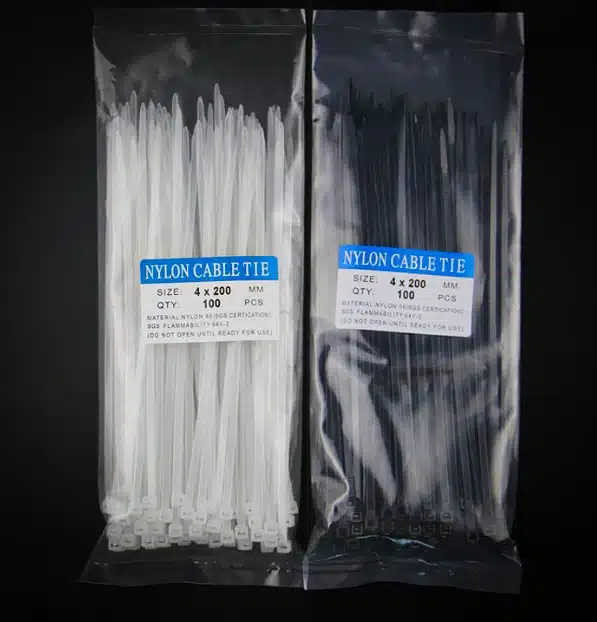
- Features: Low cost and easy to ship. Suitable for wholesale, e-commerce, and general use.
- Typical users: Distributors, engineering projects, online sellers, and private label customers.
- Common capacities: 50pcs/bag, 100pcs/bag, 500pcs/bag, 1000pcs/bag (Refer to Cable Tie Size Chart for more details).
2. PE Bags with Hanging Hole
PE bags with pre-punched holes (or heat-sealed holes) at the top for hanging display.
- Features: Adds a display-friendly hanging function on top of standard PE packaging. Great for improving retail presentation.
- Suitable for Hardware stores, supermarkets, stationery shops, or any retail setting that uses pegboards or display hooks.
- Common capacities: Typically used for small packs of 50–100 pcs.
3. Poly Bag with Header Card
A transparent PE bag with a branded paper card on top for hanging display. The card can be printed with a logo, specs, or product details.
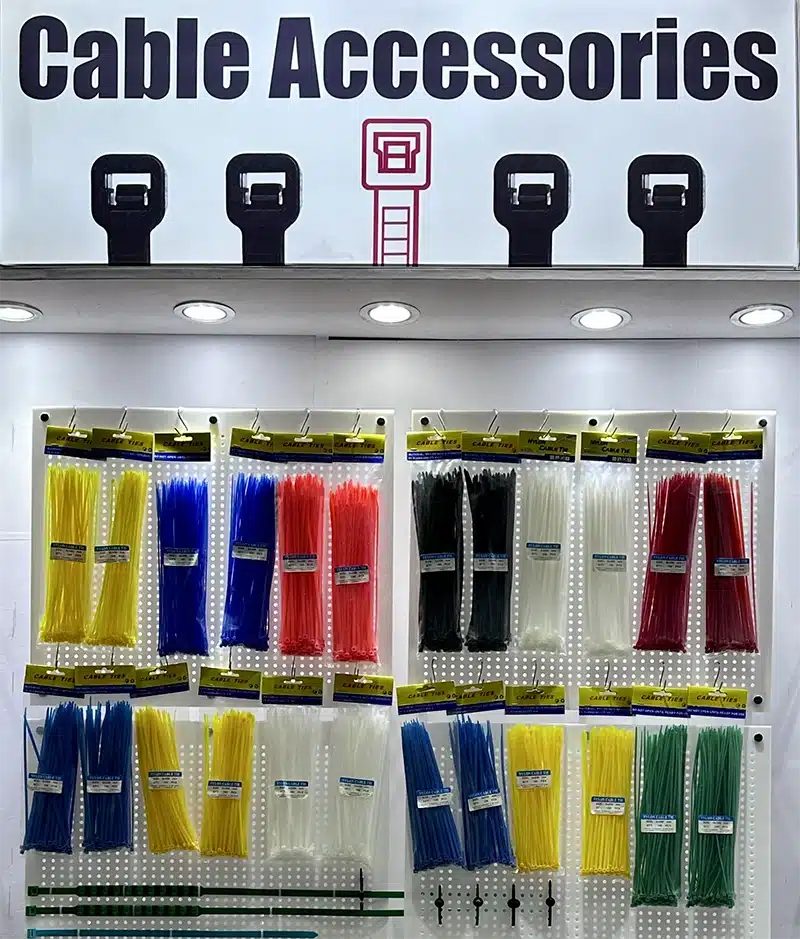
- Features: Strong retail appeal and excellent for visual presentation.
- Suitable for: Supermarkets, branded retail chains, and stationery stores.
- Notes: This type is gradually being replaced by PE hanging bags due to higher cost and easier damage to paper cards during shipping and storage.
4. Zip-Lock Bags (Resealable Bags)
PE bags with a resealable zip-lock strip at the top.
- Features: Moisture- and dust-resistant. Easy to open, reseal, and reuse. Great for storage.
- Suitable for: Outdoor or humid environments, DIY users, or small-quantity use where repeated access is needed. Also useful for industrial kits that require clean, sealed packaging.
5. Plastic Canister / Tube Packaging
Transparent round plastic jars with colorful screw-on lids.
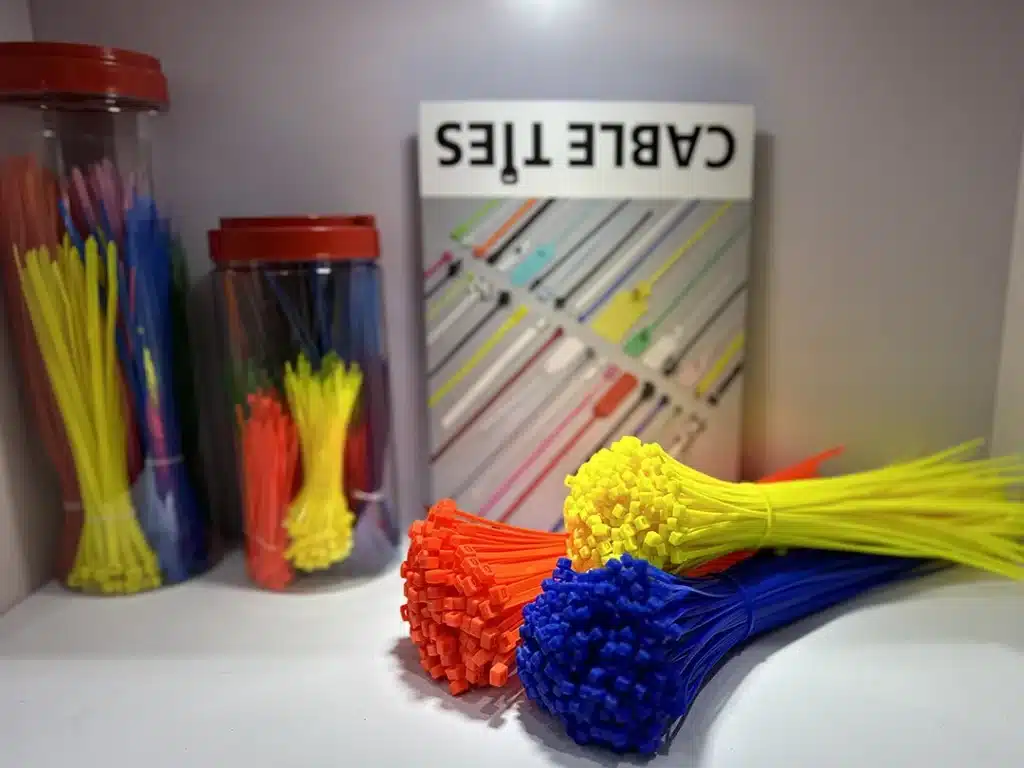
- Features: Can be used to mix different sizes or colors of cable ties. Visually appealing.
- Advantages: Eye-catching for retail display. Easy for home storage. Ideal for colorful or bundled products.
- Suitable for: E-commerce customers in Europe/US, home improvement retail, or promotional sets.
- Common capacities: 100–500 pcs per jar. Some jars come with branded stickers and barcodes.
3 Common Outer Packaging Methods for Cable Ties
As an experienced cable tie manufacturer, we not only deal with various inner packaging requests, but also receive different requirements for outer packaging depending on shipment size, region, and transportation method. Below are two of the most commonly used outer packaging options:
1. Woven Bags (PP Woven Sacks)
Made from polypropylene (PP), woven bags are soft yet durable, and are commonly used to pack cable tie inner bags or even bulk products directly.
Main Advantages:
- Flexible sizing: Suitable for all sizes of cable ties, including small and extra-long types.
- Space-saving: More compact and lightweight compared to cartons, helping reduce shipping volume.
- Damage-resistant: Tear-resistant and pressure-resistant—ideal for rough handling or multiple loading/unloading processes.
- Cost-effective: Low material and labor costs, making it one of the most economical outer packaging solutions.
Best suited for:
- Domestic transportation, especially for wholesale and large-volume orders
- Export to cost-sensitive markets with lower packaging requirements, such as certain regions in the Middle East, Africa, and South America
2. Carton + Pallet Packaging (Palletized Loading)
This method involves neatly stacking packed cartons onto a pallet, then securing them with stretch film or packing straps to form a stable and unified load unit.
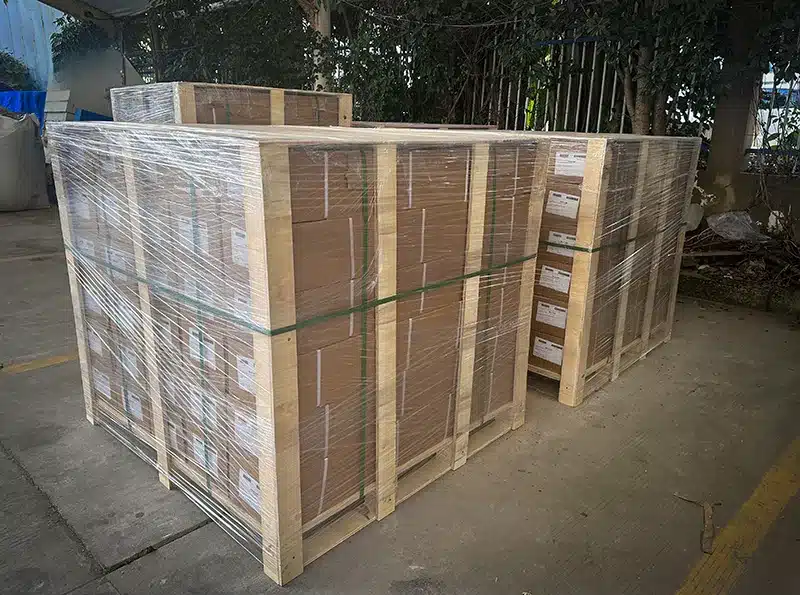
Main Advantages:
- Easy handling: Pallets can be moved directly using forklifts or pallet jacks, improving loading and warehousing efficiency.
- Ideal for LCL shipments: Uniform carton sizes and pallet stacking make it easier to calculate shipping volume and optimize space in shared containers.
- Better warehouse management: Customers can store full pallets as-is, which streamlines inventory handling upon arrival.
Best suited for:
- Export orders (FCL or LCL shipments)
- Projects that require high logistics efficiency and product safety
Pallet types
Wood pallets, plywood pallets, or paper slip sheets (commonly preferred by retailers like Walmart)
Additional notes
To protect the outer packaging, corner protectors and top covers can be added around the pallet for extra reinforcement.
3. Carton Packaging: Practical Tips for Shipping Cable Ties
When the number of cartons is not enough to justify palletizing, cable ties are sometimes shipped in cartons only. However, since cable ties are considered high-density goods, the outer packaging must offer good support and durability during transit.
Here are some practical tips based on our shipping experience:
If Palletizing Is Not an Option, Use Reinforced Cartons
- Using 7-ply corrugated cartons is strongly recommended for better protection.
- The stronger the carton’s compression strength, the safer the shipment.
Avoid Overloading or Oversizing Cartons
- Keep individual carton weight under 20kg to reduce the risk of deformation or breakage.
- Avoid leaving too much empty space inside the box—it can collapse when stacked.
- Avoid overfilling, as the box may burst under pressure.
- It’s better to use multiple smaller cartons for better stacking support and transport stability.
A well-chosen carton size and packing density not only reduce shipping risks but also improve the customer’s unboxing experience and warehouse efficiency.
Packaging Diversity Comes from Real-World Needs
From inner packaging to outer packaging, cable tie packaging may seem like a small detail—but it reflects the real needs of different customers, sales channels, and transportation scenarios. Every packaging method exists for a reason. Behind each one is a practical use case or a market-driven demand.
In this article, we’ve shared some of the most common packaging types we encounter in daily production. You might already be familiar with some of them, or maybe you’ve just discovered a few new ones.
Either way, we hope this overview has been helpful to you.
